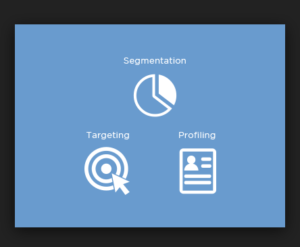But above all, you should try something to get press coverage for small business for marketing and public relations. Many companies still believe an eye-watering press release begins and ends with a business event.

Does it begin with receiving a nod from the local newspaper? Stay around, and we’ll tell you how it is much more than that.
The ordinary success story is a relic of the past, and it’s time for a new and novel take. What was successful last year needs a refreshing approach to capture attention today. And capturing attention is the name of the game, isn’t it?
Galileo once said that “All truths are easy to understand once they are discovered; the point is to discover them.” Great marketers uncover those obvious, but unexpected truths to win consumers hearts and sell products.
Related: Using Word of Mouth Marketing to Grab Attention
A press release secret ingredient
So what is the new secret ingredient? Well, maybe not so much a secret. A key ingredient is a social approach to the media and public relations.
What is the secret sauce to getting free media publicity? It is not having the best spokesperson or hiring the best PR firm. The ultimate insider secret is quite simple. Just think like a reporter. It is as simple as that.
Most of us are too close to our little world to look at the business objectively. We need to be able to spot a newsworthy story angle that people would be interested in. Small businesses need to view the world as a reporter or a reader.
An eye-watering press release … where to begin
The question of where to begin is simple enough. Pick five journalists and start to build relationships with them. Begin with these questions on each one:
What do they write about and which industries as they cover?
Where do they socialize online?
Do they share any friends with you?
Based on the research findings, narrow your list to the best three journalists. These are the ones that match up best with your objectives.
Remember that the media are a busy bunch. The goal of a media press kit should be to save them time. Probably the worst thing you can do with an online media kit is to offer little information.
Little information about advertising opportunities, and instead, provide a lengthy form to fill out. Then just wait several days for a response.
The media simply don’t have time to wait. The information should be right there at their fingertips.
Make your media kit a TOOL for planners to quickly gather the information they need. They’ll thank you for it in media dollars.
Know your audience
Writing for your audience is critical when producing any piece of content you intend to market. A bit of demographical research will go a long way toward achieving this goal.
For example, if your target market consists of the 45-and-over age group, using modern terms won’t do much to help you gain traction. Understand your audience. Know who you are writing for before you craft your newsworthy release.

Understand targeting
All releases need to be targeted when you set them up to go out for distribution. Proper targeting can often mean the difference between thousands of reads and plenty of traffic streaming back to your money website.
Or it can mean the lack thereof. Be sure you research every single industry your company, products, or services apply.
Do this before you set your industry targets pre-distribution.
Employ a catchy subject line
I have had success in gaining press release coverage by coming up with the right angle. This is the “hook” to ignite the interest of the media – starting with the title. Tying something into a news-making headline, holiday theme, or another topic of interest has always been a plus.
I then tailor-make media lists by hand selecting categories. Next, I personalize which editor, producer, or other booking contact is the appropriate fit.
A good tip is to make sure that the subject line has something interesting to say. Then the editor, journalist or media person will want to open it.
Another smart idea is to add a well-written paragraph to your email to ensure that it gets read.
Afterward, I spend ample time conducting media relations follow-up calls.
Eye-watering press release … be relevant
Your audience goes well beyond just journalists. It should also include bloggers, your industry, your partners (suppliers, marketing, etc.), and the general public.
While journalists may have the greatest influence, your suppliers and clients have more interest in your story and will be far more likely to react.
I suggest adding a short note about how your release might relate to the type of topic that readers care about. This helps to make the article really stand out.
Research your audience
Know who you are writing for and the topics that will pique their interest. Bloggers and media professionals are buried in news releases daily.
By understanding what they look for and writing to their style, your release is much more likely to rise to the top.
An eye-watering press release …think outside the box
Not every business is exciting to everyone. It can be harder to get media coverage working in sanitation than it can in celeb gossip. But just because it is harder doesn’t make it impossible.
Be creative in the way you approach the ordinary aspects of your niche industry. Take your time thinking outside the box. Find something or someone interesting to talk about. This is especially true if it involves other people. Don’t talk about yourself.
A press release can be about interesting players (individuals, companies, organizations, etc.) in your industry. Almost every quality journalist will duly ignore self-promotion.
But, be sure to subtly mention yourself in the press release (i.e., for more information, as a source, etc.).
Pitch a story, not a press release

For starters, you’ll have the most success if you pitch a story, not a press release. When you’re pitching media, you’re pitching real people, who have writing interests, beats and topics they like to cover.
Make your thinking vivid by including what comes naturally to you. For example, you may not be able to imagine sequences of images very well, but you may excel in imagining other modalities such as smell, touch, and sound. You may be excellent in infusing your visualization with emotional charge and great feelings. Make your imagination your ally and your best friend.
So while your press release should provide all the details about your announcement, your “pitch” should be tailored to the reporter and explain how your story meets their interests.
Monitor and start following the writers you think are a fit for you. This will give you a sense of not only what they cover, but who they are.
That is essential. Writers want to know that you follow them and enjoy their journalism.
Tweet them a story that has a connection with your business. Sometimes, they’ll tweet about a story they’re working on and that they are looking for a source.
We’ve had a lot of success with this technique. Respond to them if it’s relevant to your business or expertise.
The bottom line
There is simply no substitute for cultivating a list of reporters and bloggers who specialize in your field. Always write to them individually with your press release.
Even better – include a mention of a recent article they wrote that was on the same topic as your press release.
That, in truth, is the best way to outsmart the opponents of change. Find a way to make it successful, no matter how small that initial victory may be, then empower others to succeed as well. It’s easy to argue against an idea, you merely need to smother it in its cradle. Yet a concept that’s been proven to work and has inspired people to believe in it is an idea whose time has come.
